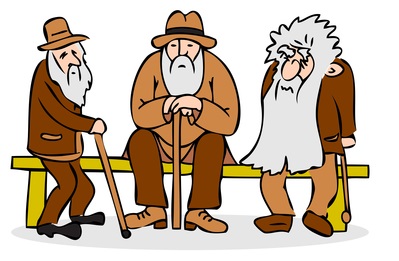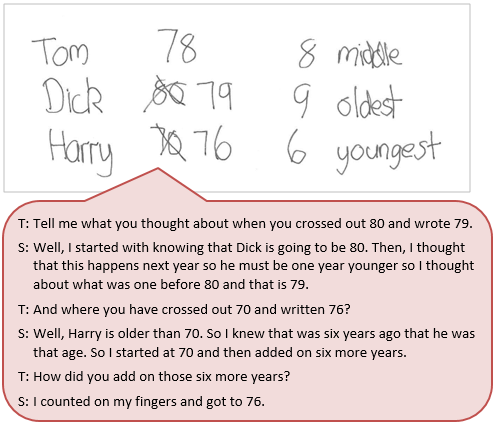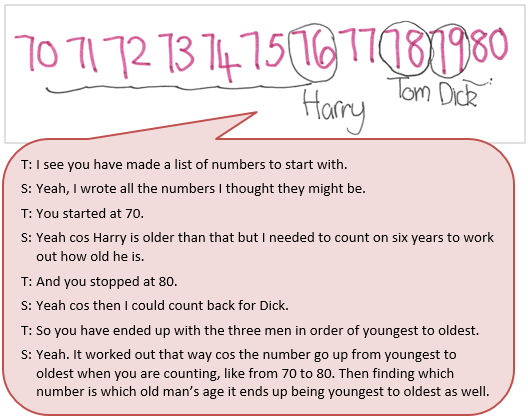The purpose of this activity is to engage students in using counting strategies to locate and compare numbers to solve a problem.
This activity assumes the students have experience in the following areas:
- Counting on and back from any number in ones.
- Ordering whole numbers, including putting numbers of a number line.
- Using materials to represent number problems.
- Adding and subtracting simple whole numbers using counting and part-whole strategies.
The problem is sufficiently open ended to allow the students freedom of choice in their approach. It may be scaffolded with guidance that leads to a solution, and/or the students might be given the opportunity to solve the problem independently.
The example responses at the end of the resource give an indication of the kind of response to expect from students who approach the problem in particular ways.

There are three old men, sitting on a bench: Tom, Dick and Harry.
Tom is 78 years old.
Dick is going to have his 80th birthday next year.
Harry had his 70th birthday six years ago.
Put Tom, Dick and Harry in order from youngest to oldest.
The following prompts illustrate how this activity can be structured around the phases of the Mathematics Investigation Cycle.
Make sense
Introduce the problem. Allow ākonga time to read it and discuss in pairs or small groups.
- What do you think the problem is about?
- What information has been given?
- Do I know what ‘in order’ means?
- What will an answer to the problem look like?
- What do you need to find out?
Plan approach
Discuss ideas about how to solve the problem. Emphasise that for now you want ākonga to say how they would solve the problem, not to actually solve it.
- What might be useful ways to solve this problem?
- What tools might be useful, such as a number line, or a hundreds board?
- How could I use others to help me solve the problem?
- Could I act the problem out? Could I draw a diagram? Could I solve a simpler problem?
- How might I record to organise the information?
Take action
Allow ākonga time to work through their strategy and find a solution to the problem.
- Am I recording in an organised way so I can keep track of the ages of the men?
- Is my working correct? How can I check?
- Do I see any pattern? How might the tools I have help me?
Convince yourself and others
Allow ākonga time to check their answers and then either have them pair share with other groups or ask for volunteers to share their solution with the class.
- Have I got an answer? Does my answer seem right? How can I check?
- How can I convince others that I am right?
- What ways can I find to show other people I am right?
- Is there only one answer? How can I be sure?
- Did I use a good strategy? How does my strategy compare with what others did?
- Would this help me solve a similar problem? How?
Examples of work
Work sample 1
The student uses the information to create a sequence of counting numbers to solve the problem.
Click on the image to enlarge it. Click again to close.
Work sample 2
The student writes down a list of possible values for the ages of the men. They use the information to find a set of ages that works.

